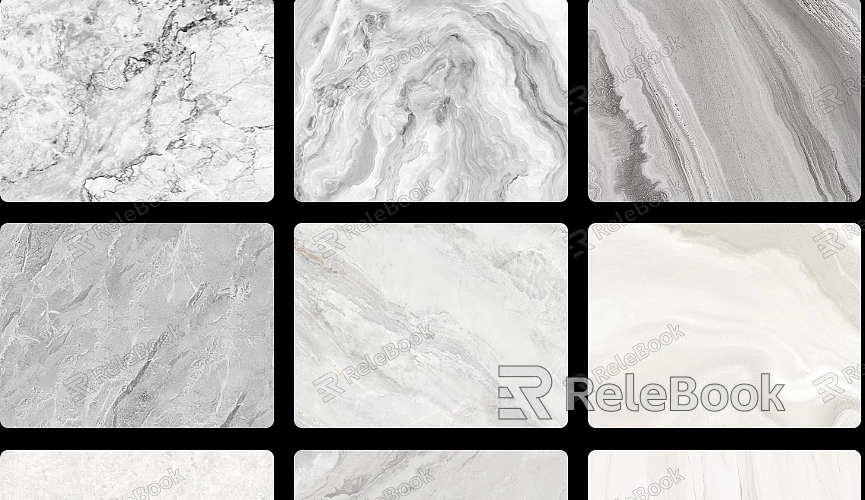Application of Marble Texture
Marble texture finds widespread applications in 3D design and 3D scenes. Marble texture typically includes natural patterns, colors, textures, spots, and veins found in marble. This texture is extensively used in projects such as 3D modeling, architectural rendering, and game design to render surfaces with the distinctive appearance and gloss of marble. Let's explore the steps and processes involved in using marble texture in 3D model rendering.

1. Choose Appropriate Marble Texture: Select marble textures that meet the design requirements for the project, whether it's a traditional marble texture, abstract patterns, or an antique marble effect.
2. Prepare 3D Scene: Set up your scene in Blender or other 3D modeling software, ensuring that scene elements harmonize with the marble texture.
3. Import Marble Texture: Import the chosen marble texture into the project, ensuring image quality and resolution meet design standards.
4. Adjust UV Mapping: Fine-tune UV mapping on scene elements to ensure accurate mapping of the marble texture to different parts.
5. Render and Lighting Effects: Adjust lighting effects in rendering settings and observe how the marble texture naturally performs under different lighting conditions.
6. Add Details and Highlights: Use image editing software to add details to the marble, emphasizing highlights and shadows to make it more realistic.
7. Real-time Preview: In 3D modeling software, preview the marble texture effects in real-time, making adjustments to ensure harmony with the overall scene.
Common Applications of Marble Texture Rendering Effects:
1. Palace Hall Flooring: Apply traditional marble texture to design intricate and elegant patterns for palace hall flooring, adding a royal atmosphere.
2. Modern Art Gallery Walls: Use abstract marble texture to create a unique and stylish visual effect for the walls of an art gallery, highlighting artworks.
3. Ancient Sculpture Pedestals: Use antique-effect marble to create an atmosphere of age and history for pedestals supporting ancient sculptures.
4. Luxury Hotel Lobby Columns: Utilize marble texture to give a sense of luxury to columns in a hotel lobby, providing guests with a sophisticated stay.
5. Upscale Restaurant Tabletops: Apply glossy marble effects to design opulent dining spaces with sumptuous tabletops for an upscale restaurant.
6. Fashionable Commercial Space Flooring: Use modern marble texture to bring a unique taste to the flooring of fashionable commercial spaces, attracting trendsetters.
7. Medical University Library Steps: Use clear-textured marble for the steps in a medical university library, creating a tranquil and professional academic atmosphere.
8. Villa Courtyard Pool: Apply marble texture to the edges of the pool in a villa courtyard, creating a fresh and elegant private courtyard.
By mapping marble texture onto the surfaces of 3D models, we can simulate the appearance of marble, adding a touch of sophistication and nobility to projects. Marble texture is often used to simulate surface materials in architecture, sculptures, flooring, countertops, and more. If you need high-quality 3D textures and HDRI or 3D model downloads, you can find them on Relebook. Simply download and import the textures and 3D models directly into your project.

